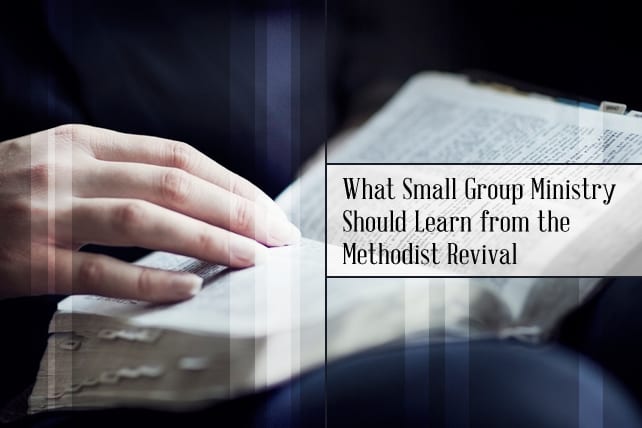What Small Group Ministry Should Learn From the Methodist Revival

“The church of today should take a lesson from the early church and the successful revival movements in church history.”
John Wesley, the founder of the Methodist Church, saw that new wine must be put into new wineskins. He was not only used to spark a mighty revival, but he also created structures that could serve as receptacles of the harvest. Within a century, about one in every 30 Englishmen was Methodist.
A key to the Methodist revival was the accountability that each of these new believers found in small groups. Called “class meetings” by Wesley, these groups were, in effect, cell groups. Men and women were appointed as “class leaders” to conduct the meetings and disciple the converts.
Howard A. Snyder, in The Radical Wesley, tells us,
The classes normally met one evening each week for an hour or so. Each person reported on his or her spiritual progress, or on particular needs or problems, and received the support and prayers of the others… According to one author it was, in fact, in the class meeting “where the great majority of conversions occurred.”
The class meeting system tied together the widely scattered Methodist people and became the sustainer of the Methodist renewal over many decades. The movement was in fact a whole series of sporadic and often geographically localized revivals which were interconnected and spread by the society and class network, rather than one continuous wave of revival which swept the country. [Classes joined together to form a society.]
Without the class meeting, the scattered fires of revival would have burned out long before the movement was able to make a deep impact on the nation.
Now here is the remarkable thing. One hears today that it is hard to find enough leaders for small groups or for those to carry on the other responsibilities in the church. Wesley put one in 10, perhaps one in five, to work in significant ministry and leadership. And who were these people? Not the educated or the wealthy with time on their hands, but laboring men and women, husbands and wives and young folks with little or no training, but with spiritual gifts and eagerness to serve.
The system which emerged gave lie to the argument that you can’t build a church on poor and uneducated folk. Not only did Wesley reach the masses; he made leaders of thousands of them.
In time the Methodist believers began to put more of an emphasis on the Sunday morning church meetings in their buildings. As they de-emphasized the accountable relationships they had in their class meetings, the revival movement began to decline. May we not make the same mistake in this generation! Let us see that small groups have often served to fan the fires of revival throughout church history. As we seek to ignite a discipling movement in our own time, we must place the local prayer and support group concept at the very center of our strategy. The great reformer Martin Luther proposed that widespread spiritual renewal should take the form of ecclesiolae in ecclesia—little churches within the church.
The church of today should take a lesson from the early church and the successful revival movements in church history. Often with only minimal success, we have clung to traditional church structures while trying to reach people for Christ with extravagant church programs and high-tech methodology. Though such methods may have their place, they can never substitute for personal relationships formed in the context of genuine Christian community.

Tidak ada komentar:
Posting Komentar